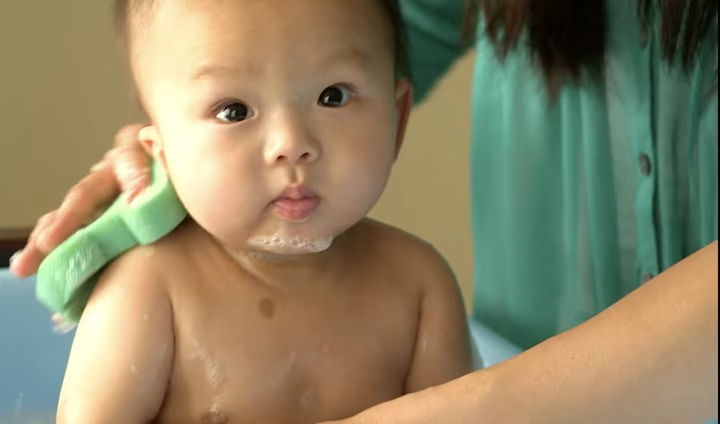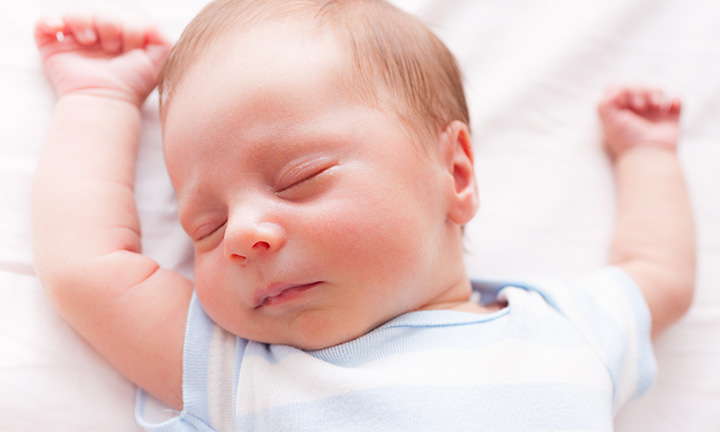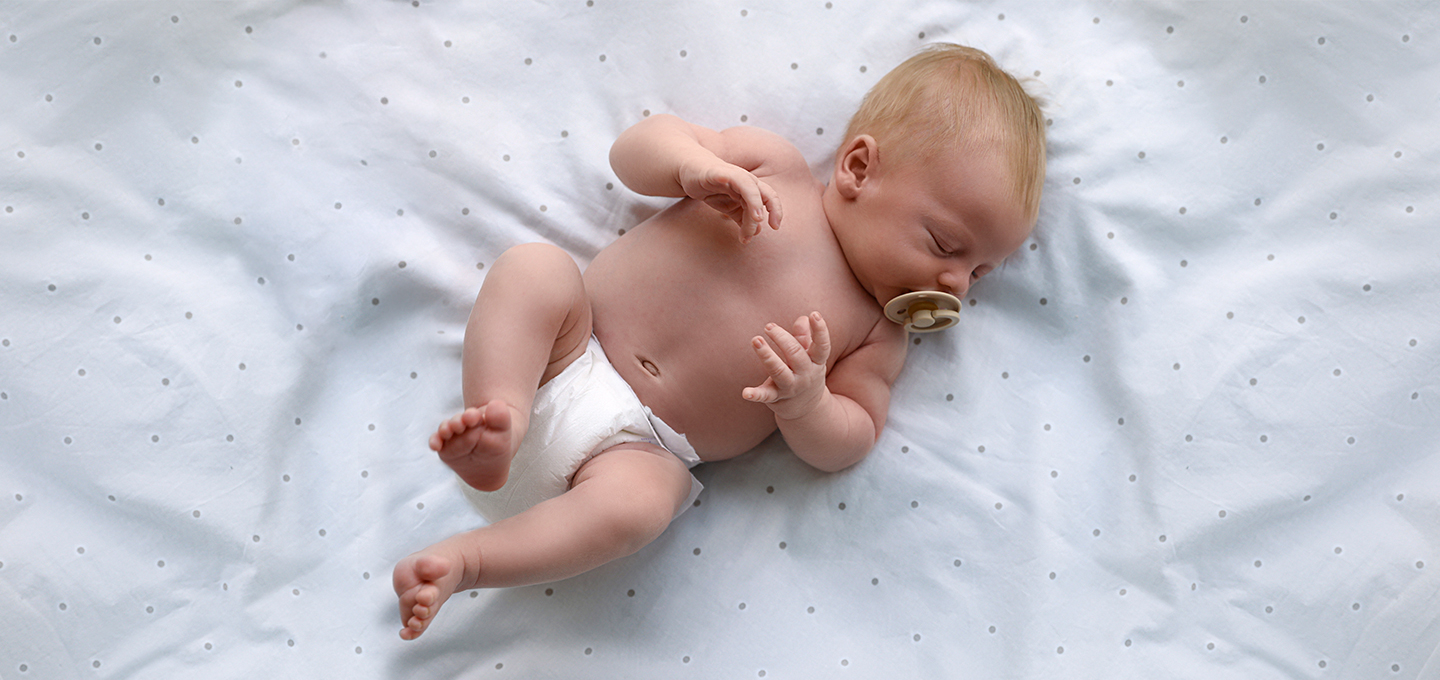
How to Bathe a Newborn: Safe Bathing Tips


Not sure where to begin with your newborn’s first bath? You’re not alone—and you’re in the right place. Bathing an infant for the first time can feel overwhelming, but it doesn’t have to be.
Here’s what you’ll learn:
Keep reading for calm, clear guidance on how to bathe a newborn, from preparing your space to drying and moisturizing afterward.
When Will Your Baby Be Ready for Their First Tub Bath?
You may wonder when it's safe to transition from sponge baths to a bath in a baby tub or sink. According to the American Academy of Pediatrics, it’s best to wait until your baby’s umbilical cord stump has fallen off and the area has healed before starting tub baths.
After that, your newborn’s first bath in a tub should be gentle, brief, and focused on helping them feel secure. If your newborn seems uncomfortable or upset, it’s completely fine to return to sponge baths for a little while. There's no rush; every infant's first bath experience is different, and it's all about easing into it at your baby’s pace.
How to Give a Newborn a Bath
Bathing your newborn for the first time might feel a little intimidating, but don’t worry—you’re not alone. If you’re wondering how to bathe a newborn or simply want guidance on giving a newborn a bath, this step-by-step breakdown will help make it feel more manageable. From preparing the space to washing and drying your baby, each step of the process can be gentle, safe, and even soothing for both of you.
Let’s walk through how to get ready and what to expect.
Gathering Supplies and Preparing the Room
Before you begin, it’s helpful to have everything set up within arm’s reach so you won’t need to step away once your little one is in the bath. The right tools on hand not only help the process go smoothly but also support your baby’s safety.
Make sure the room is warm and free of drafts—this helps your baby stay cozy when undressed. You may want to lay out the towel ahead of time so you can wrap your baby up right after their bath.
A Baby’s Bath Temperature
Your baby's bath water temperature should be warm, not hot; the American Academy of Pediatrics (AAP) recommends a maximum temperature of 120°F. Test it by using your wrist or elbow.
Swirl the water to even out the temperature and use just 2 inches of water for your newborn’s bath. A gentle temperature helps keep bath time calm and safe for your infant's bath routine.
How to Hold Your Baby Safely
Holding your newborn securely protects them during a bath, may help them feel safe, and help you feel more confident. Use your non-dominant hand to support their head and neck, while your other hand washes their body. If you're using a baby bathtub, always keep one hand on your little one and never leave them unattended.
Step-By-Step: Washing and Drying
Wondering how to wash a newborn or how to make your newborn's bath routine feel easier?
Follow these simple steps for a safe, soothing experience:
And for extra care during this stage, Pampers Swaddlers are specially designed with an umbilical cord notch to protect your baby’s belly while it heals—perfect for this delicate sponge bath newborn phase.
How Often Should You Bathe Your Newborn?
You may be surprised to learn that your newborn doesn’t need that many baths. Bathing your baby three times a week is sufficient, provided the diaper area is thoroughly cleaned during each change. Need help? Here's a helpful guide on diaper changing.
It’s best not to give daily baths because frequently bathing your newborn may dry their skin.
When Is the Best Time of Day to Bathe Your Baby?
There is no one perfect time to bathe your baby—it’s your decision. Choose a time when you’re least likely to be interrupted and when your baby is calm.
You may like to give your baby a bath in the daytime because they’ll naturally be more alert. Alternatively, you may include bath time in your baby's bedtime routine.
If you plan to bathe your baby after feeding them, wait a while to ensure their tummy has had a chance to settle.
When to Start Bathing a Baby Daily
Most newborns don’t need a bath every day, and daily washing can lead to dry skin. However, as your infant grows older and starts to enjoy the water more, or becomes messier during the day, you may want to consider adding baths to your daily routine.
Can You Bathe Your Baby While the Umbilical Cord Stump Is Still Attached?
During your baby’s first few weeks, while the umbilical cord stump is still attached, you might be unsure about how to bathe a newborn with an umbilical cord stump. In this case, you should only give sponge baths.
A sponge bath is as simple as wrapping your baby in a towel and wiping them with a damp washcloth and soapy water. You’ll want to do this on a comfortable surface such as a changing table. Keep your baby wrapped in the towel, bathing one part at a time.
The umbilical cord stump typically falls off in a few weeks. If it stays on longer than that, you might want to check with your baby’s healthcare provider.
You’ll want the umbilical cord stump to dry up and fall off on its own, which is why only sponge baths are recommended until that time. After the stump falls off, you may start to notice that your little one has an adorable innie or outie belly button. Once the area has healed, it is ok to give your baby a tub bath.
Can You Give Your Baby Bath Toys?
Keep in mind that for infants, you don’t need any bath toys at all, as splashing around in the water will be enough entertainment. As your baby gets older, you can add some floating baby toys or even waterproof books to keep them occupied.
FAQS AT A GLANCE
Start with a sponge bath while the umbilical cord stump is still attached. Use a warm, damp washcloth with mild soap to clean one area at a time, keeping your baby wrapped in a towel. Be gentle and talk softly; it helps comfort your baby and you.
The Bottom Line
Bathing your newborn might feel a little intimidating at first, but with practice, it becomes a special part of your routine. Knowing how to bathe a newborn with an umbilical cord and when you can bathe a newborn can help you feel more prepared and confident.
Before long, your little one may start to enjoy baths, and what begins as a careful task could become a playful, splash-filled moment you both look forward to (always with supervision, of course).
And since you’re already handling all those diaper changes, why not get rewarded along the way? Download the Pampers Rewards App, and for every diaper purchase, you’ll earn Pampers Cash that you can redeem for rewards. Just 10 diaper scans = $10 off Pampers!
Read more about Baby
Related Articles
Join a World of Support
through Pregnancy and Parenthood.
TRACK WITH TOOLS
LEARN WITH EXPERTS
GET REWARDED










